Brad Grimes of AVIXA shares how creating tech-enabled workspaces requires understanding how people work before understanding how they use technology.
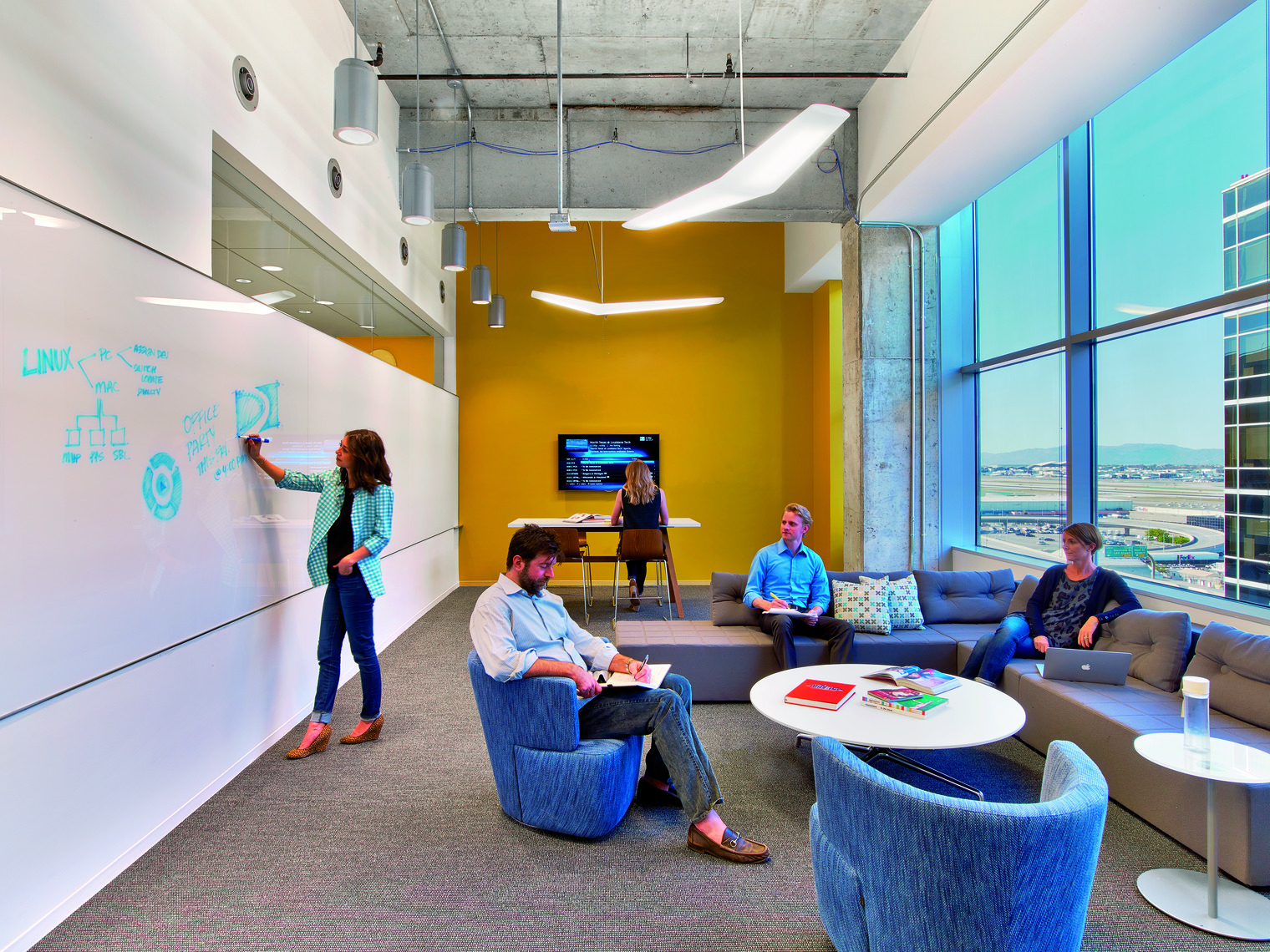
Technology and the workplace are not separate entities. Collaborative technology is part of nearly every workflow, integrated into the fabric of how people communicate. At the same time, the modern workplace is sometimes at odds with itself. Designers are tasked with creating spaces that are flexible but consistent, support open collaboration but deep focus, promote innovation but enable execution. Oh, and they should include all the cool technology today’s employees expect.
It’s hard to separate technology from people and space, and anyone who tries to design collaborative technology into a workspace without considering who will use it, where, and why will fail on some level. When designing workspaces to make the best use of technology, it starts with focusing on everything.
CEOs aren’t necessarily asking for new technology, explains Byron Tarry, Executive Director of Global Presence Alliance (GPA), a consortium of firms delivering audiovisual and communications solutions. “What executives are asking for is the ability to leverage the company’s people to achieve an advantage. They want to take their organizations’ collaborative culture and get people working together better.”
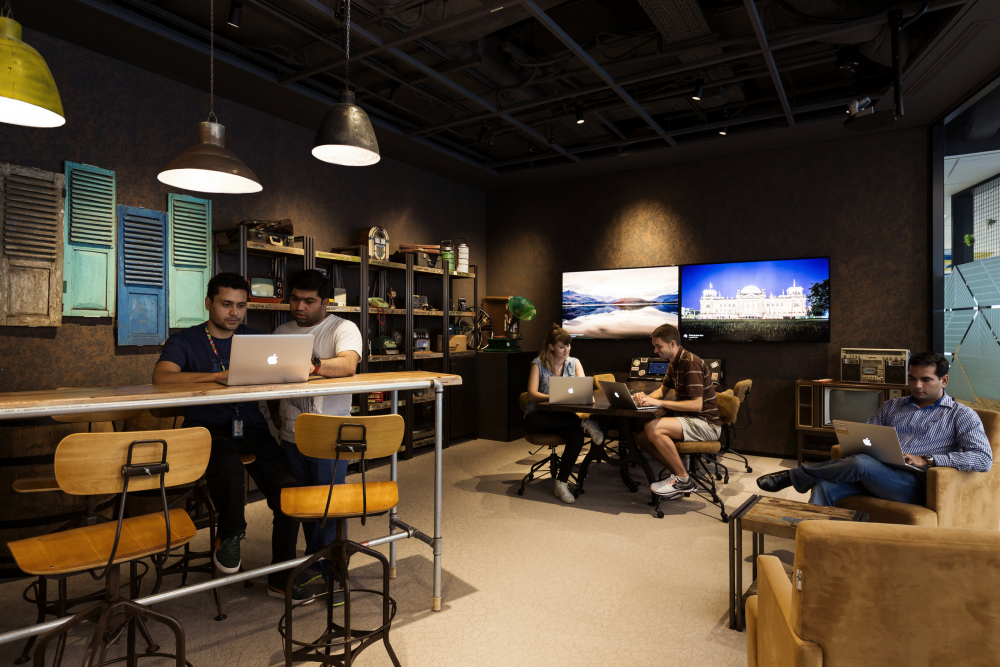
That will include ubiquitous technology, but not to the exclusion of thoughtful design.
“It’s changed how we design spaces,” says Kay Sargent, Director of HOK’s Global Workplace practice. “It’s no longer about butts in seats. It’s about understanding what people do when they go to an office. We do a pretty good job of anticipating what technology can do, but where we fail is the social aspect. How do we balance space and technology to create good work experiences?”
Ultimately, to create spaces where workers use collaborative technology to accomplish their goals, designers, technology integrators, and employees should answer several questions. What is work? What is a meeting? What needs to be accomplished? How can people, space, and technology support the goals?
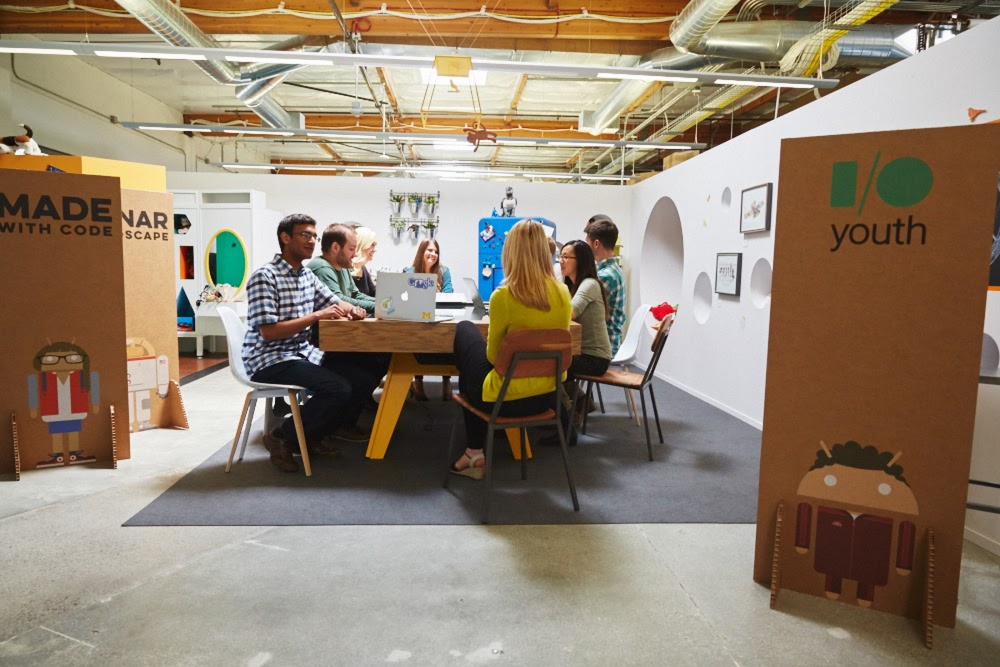
Meeting Spaces for Tech-Enabled Collaboration
For example, at many organizations, collaborating is not the same as meeting. Workers can collaborate ad hoc around a laptop computer in a dining hall, and designers can create those spaces to include supporting technology — Wi-Fi, power, display screens to gather around. But people may not want to hold a meeting in that same space — to present information or brainstorm in groups. Just because the technology exists to meet anywhere doesn’t mean that anywhere is a proper meeting space.
Anyone who’s worked in an open office and needed to meet with colleagues — both in-person and via videoconferencing — and anyone in the same open office who was trying to get work done, knows the potential downside of such a design.
“One of the drivers of huddle spaces, for example, is the need to reduce noise pollution around where people work,” says Jenny Hicks, Head of Technology at Midwich, a U.K.-based distributor of audiovisual and collaborative solutions. “We’re seeing increased demand for special booths for video conferencing, and interest in modular design—like meeting spaces on casters. Teams can combine them together to make an ad hoc, larger meeting space.”
Google, a company known for innovation and a collaborative culture, is trying to drive meetings into meeting rooms. There are still plenty of casual spaces for collaboration, but as the company grows, it’s running out of meeting rooms. Rather than adopt the philosophy that technology lets employees meet anywhere, Google is developing a system of non-traditional, tech-enabled meeting spaces, based in part on analysis of how its employees work.
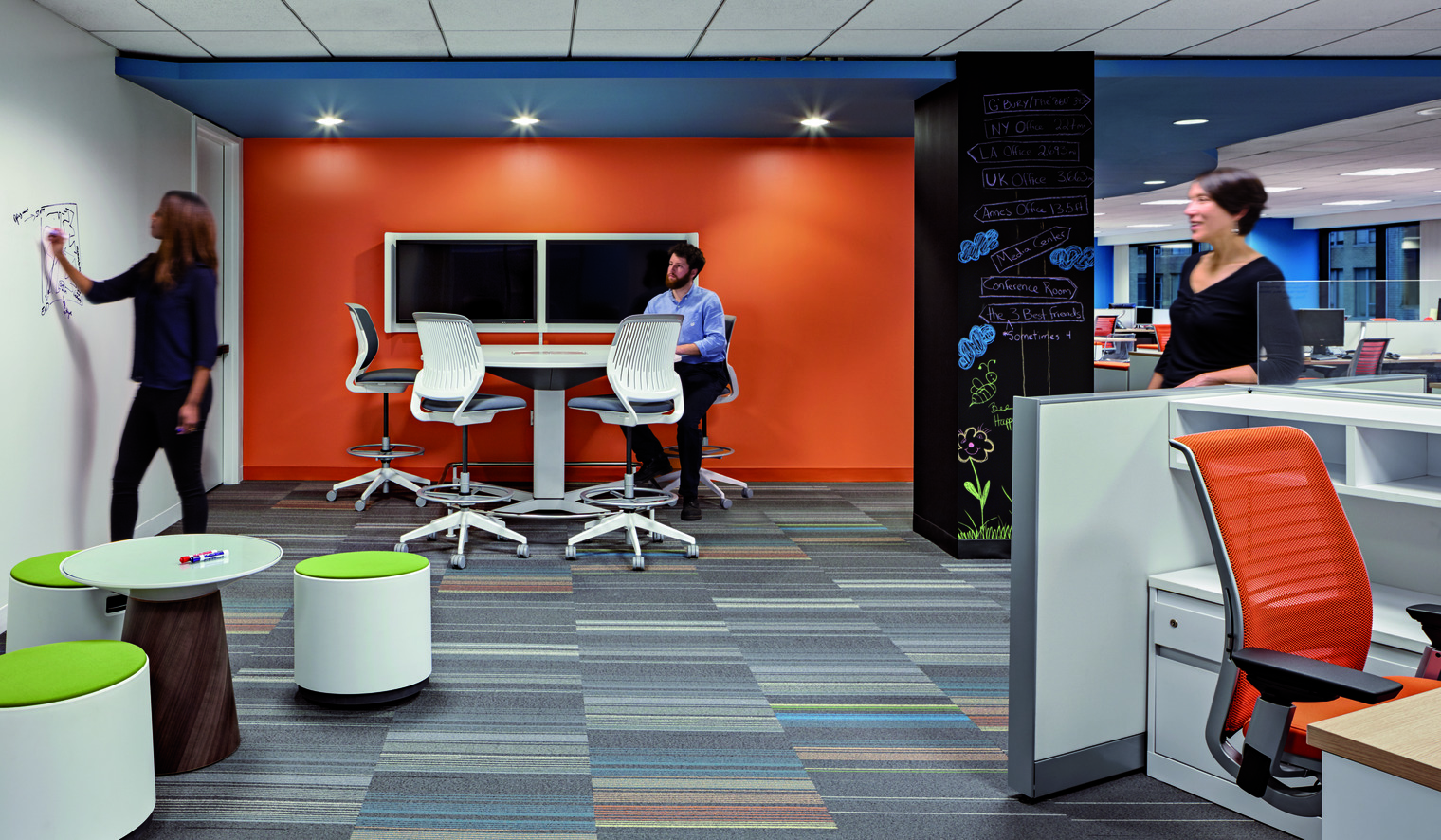
“Most Googlers’ work style shifts between focused work and collaboration,” says Gary Keene, Operations Manager for Googler Engagement. “What we’re finding is that with a lack of meeting room space, you end up with shadow conferencing—people doing calls at desktops, on their laptops, and in cafeterias. And while it’s fine to an extent, it begins to become a distraction for people who are doing focused work.”
For a time, the solution was to have many shared meeting rooms, with simple, intuitive conferencing systems. The experience was the same in every room; just find one that’s free, turn on the system, and start meeting.
But even in those situations, meeting spaces can sit idle. And not every team in the organization works the same or requires the same tools. As a result, Keene says, Google is moving to a meeting space model based on team needs. The company is giving teams a “space budget”—physical floorspace in otherwise open work areas—where they can erect a company-provided, modular meeting space. As long as it’s deployed, the room belongs to the team. If for some reason the team doesn’t need the room anymore, it can be removed in 24 hours.
“We’ve been supplying modular meeting rooms that we can spin up and redeploy very quickly,” Keene says. “Within their space budgets, teams can say, ‘We want a four-person meeting room and a phone booth, please.’ They’re both [videoconferencing]-enabled and maybe the meeting room also has Jamboard [interactive display]….We’re trying to make meetings and ad hoc collaboration genuinely frictionless, while at the same time removing the problem of noise distraction in what are predominantly open-plan offices.”
In the U.K. Google office where Keene works, there are about 2,000 engineers and 150-plus modular meeting rooms deployed at any one time. They’re made of interchangeable, acoustically treated wood panels, with privacy glass and a door. The audiovisual technology is straightforward — one or two screens built into a wooden frame, with hardware and cables laid out neatly in a grid underneath and covered by a snap-on wooden credenza.
“When we designed the building, we designed a modular ceiling grid for any services that need to run into a meeting room,” explains Keene. “That means that data, power, and AC can just be snapped in.”
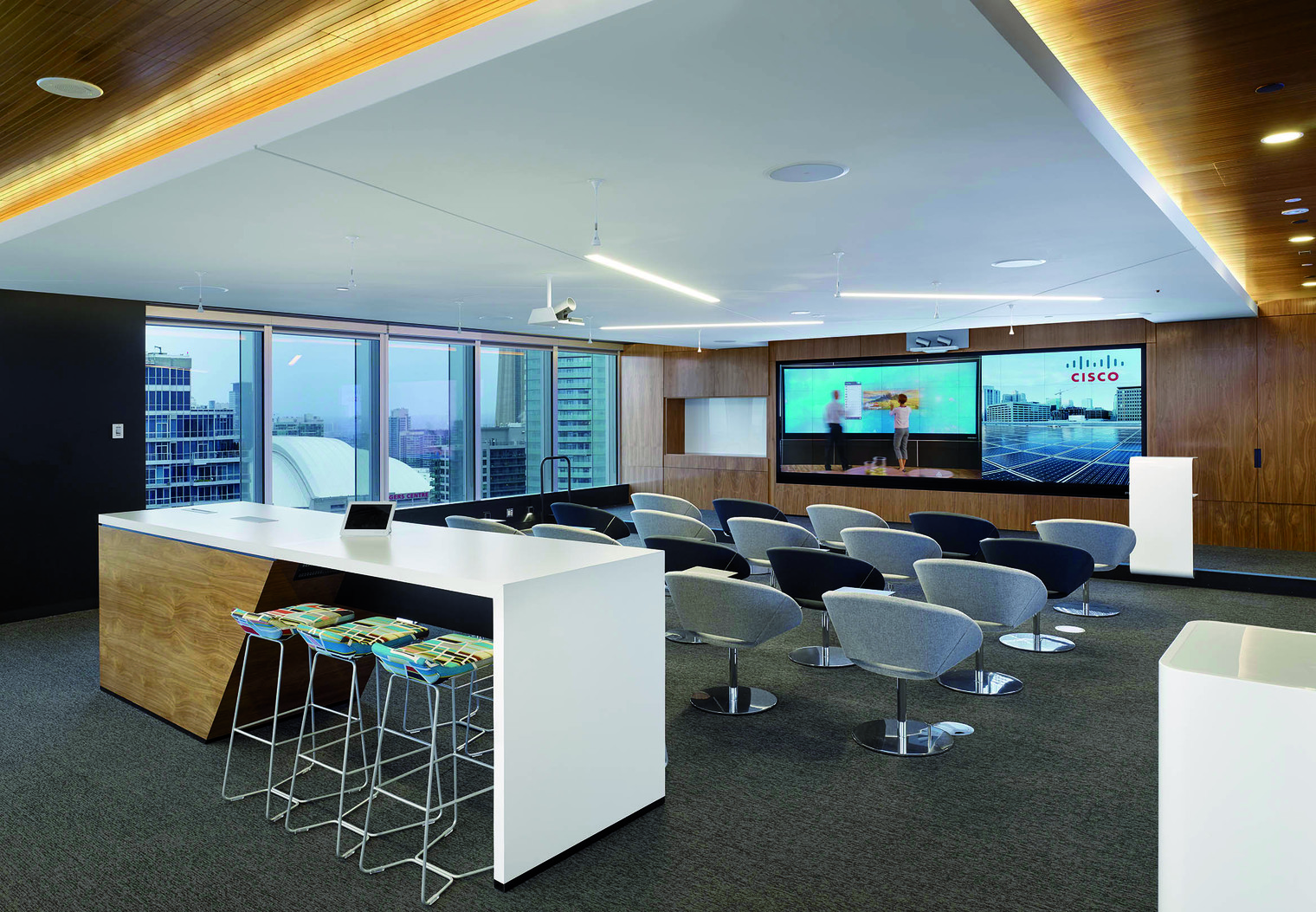
Technology That Works Anywhere
As Google’s example shows, from a technology perspective, the challenge is delivering integrated solutions that work frictionlessly, whether in modular spaces or wherever a company’s employees decide to meet.
“The requests we get have changed in the last 18 months,” says Hicks. “Previously, it was all about larger room systems. But now, if there is dead space in a building, then that’s a potential meeting space.”
Supporting such impromptu build-outs can have its pitfalls. For example, not every company, facility manager, or IT department will recognize that where it intends to foster collaboration may not support the necessary infrastructure. GPA’s Tarry says a customer wanted to outfit more than 350 rooms with audiovisual systems to handle video communications and collaboration. But when GPA integrators started doing site inspections, they realized half the rooms designated as meeting spaces needed physical remediation—conduit, wiring, wall reinforcement, etc.
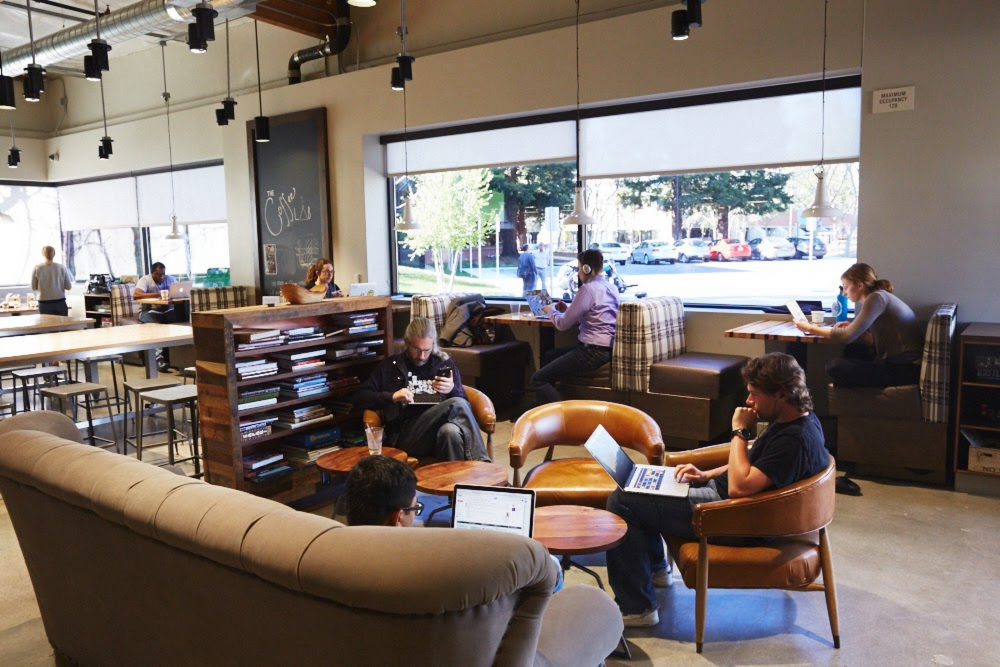
GPA developed something called Velocity Rooms, which are standardized solutions to support presentations, conferencing, or collaboration. They include custom components that should work in any space, regardless of design or construction.
“We need to be able to walk into 99 percent of meeting rooms—sight unseen—and at least get them working,” Tarry says. “We don’t want to have to touch the rooms physically, yet still know users will be able to use the tools and collaborate effectively.”
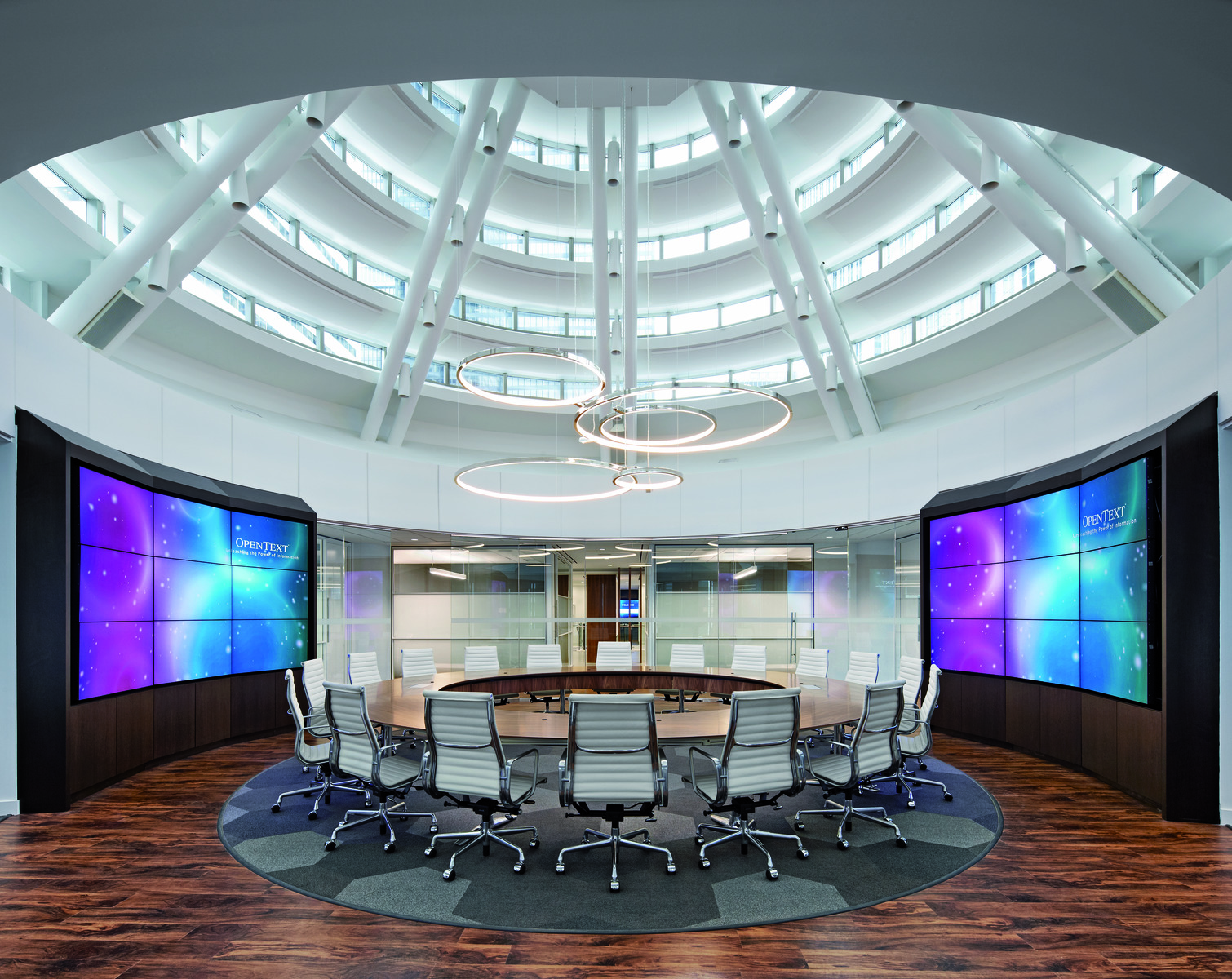
Talking to Users About Work
Arriving at the technology solution to support collaboration means learning from users. “We’ve changed the way we consult with customers,” says Hicks. “Rather than fielding requests for videoconferencing in a certain number of rooms, we’re focusing less on the [technology] and asking them to go back to staff and collect feedback about their desired meeting experience, from booking a room, to inviting guests, to getting network access, to actually running a meeting.”
Hicks says doing this type of needs analysis pays off. Midwich has embarked on several projects in which taking a user-led approach has significantly altered the solutions that went into those spaces. The result has been happier customers.
At Google, Keene’s team regularly surveys employees to learn how they work, meet, and collaborate, and identify obstacles to successful collaboration based on past experiences.
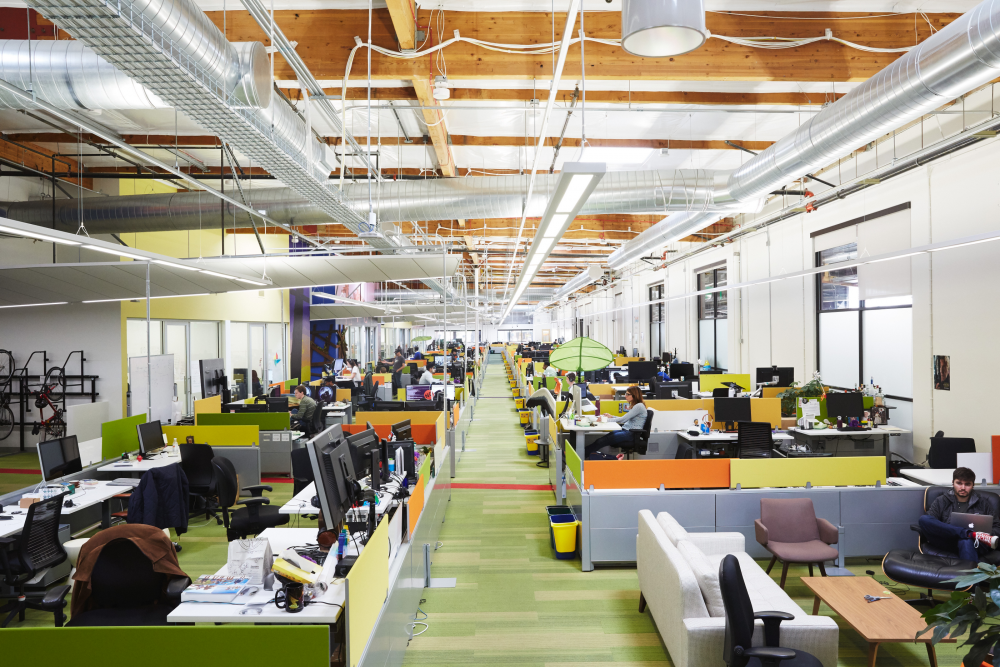
“We don’t view it as an open-office against closed-office argument,” he says. “We ask ourselves how we can provide a facility that allows individuals to focus when they need to focus and collaborate when they need to collaborate.”
As critical as technology is to the modern workplace, the spaces where people collaborate need to be designed around the work, not around the supporting technology. If anything, all the audiovisual systems associated with conferencing and collaboration need to disappear into the spaces they activate— or, when not needed, altogether.

